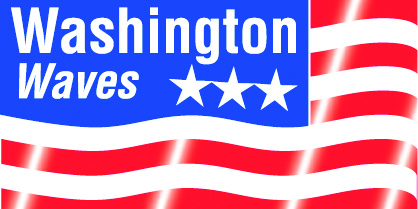Washington, D.C.—Setting the pace for final approval of the U.S.-Mexico-Canada Agreement (USMCA), the Senate Finance Committee voted 25 to 3 to advance legislation implementing the major trade deal between the three nations.
H.R. 5430, sponsored by House Majority Leader Steny Hoyer (D-Md.) with House Minority Leader Kevin McCarthy (R-Calif.) as a co-sponsor, now goes to the Senate Commerce, Science, and Transportation Committee, which has set a January 15 mark-up.
Despite the bill being referred to several other Senate panels, Finance Committee Chairman Chuck Grassley (R-Iowa) sounded an optimistic note for a speedy final vote.
“I expect the full Senate will act soon, and that final approval of USMCA is just around the corner,” Grassley said.
“That is good news for millions of farmers, manufacturers and workers in every corner of America.”
Grassley said the modernized trilateral trade agreement, essentially an update to the decades-old North American Free Trade Agreement (NAFTA), will open new markets for American exporters, create hundreds of thousands of new jobs, grow the national economy and protect U.S. workers.
Sen. Ron Wyden (D-Ore.), the panel’s ranking member, echoed the chairman’s statement, saying “this new NAFTA delivers long-overdue upgrades to labor standards, the environment and digital trade, while providing certainty to farmers and manufacturers who have been hammered in recent years.”
Sen. Pat Toomey (R-Pa.), one of the opponents of the agreement, conceded NAFTA needed to be updated but warned provisions included in the new agreement would restrict trade and investment in the future.
Toomey also criticized the process used to move the agreement because it does not allow for amendments.
Access To Maritime Facilities
The Office of Port and Facility Compliance is reminding facility owners and operators of approaching deadlines associated with the Seafarers’ Access to Maritime Facilities final rule that took effect May 1, 2019.
“Each facility owner or operator must implement a system for providing access through the facility that enables individuals to transit to and from a moored vessel in accordance with guidelines found in the Code of Federal Regulations at 33 CFR 105.237,” the agency stated.
“Access procedures must be documented in the Facility Security Plan for each facility and approved by the local Captain of the Port.”
By February 3, the agency said, a system for seafarers’ shore access must be documented in the Facility Security Plan (FSP).
By June 1, the facility owner/operator must implement a Coast Guard-approved seafarers’ access system, and the Coast Guard enforcement of the final rule also begins on June 1.
For questions, contact the Office of Port and Facility Compliance at HQS-PF-fldr-CG-FAC@uscg.mil.
Documentation Delays
The National Vessel Documentation Center (NVDC) announced it is experiencing delays in issuing Certificates of Documentation (CODs), Abstracts of Title, COD renewals and other documentation because of issues with its information technology system.
“The Coast Guard recognizes the need to minimize the effect on the maritime community and is working to resolve these issues as quickly as possible,” the NVDC stated in a posting on its website.
“We apologize for any inconvenience this may cause.”
Opportunity Zone Investments
Major ports and intermodal marine facilities were included in a new interactive map unveiled by the Department of Transportation (DOT) to highlight federal investment in major infrastructure projects located in and around Opportunity Zones and encourage investment in underserved rural and urban communities.
Created by the 2017 Tax Cut and Jobs Act, Opportunity Zones are designated by state governors and certified by the U.S. Treasury secretary to boost economic development in low-income and distressed communities.
According to DOT, it has issued 13 funding opportunities that contain Opportunity Zone language and awarded more than $2 billion in fiscal year 2019.
“Opportunity Zones have the potential to increase job creation in underserved communities, especially in rural areas, and the department is working to ensure there are transportation links to opportunity zones,” U.S. Transportation Secretary Elaine Chao said.
In addition to ports and intermodal marine facilities, other facilities represented by data sets on the map include major federal highway projects, interstate exits, National Highway System bridges, intercity bus stations, commuter/light rail stations, Amtrak stations and industrial properties, intermodal rail facilities, airports, National Highway System and rail sidings.
WAN Optimization
The Coast Guard announced plans to enter into a cooperative research and development agreement (CRADA) with Swish Data Corporation to evaluate implementing Wide Area Network (WAN) optimization technology in a shipboard environment, but asked for public comments on the possible participation of other parties in the proposed CRADA.
Other potential non-federal participants with capability on this type of research were invited to consider submitting proposals in similar CRADAs.
Comments must be submitted by February 6.
For additional information, contact Lt. Cmdr. Grant Wyman at 860-271-2727.
OTI Hearing Procedures
The Federal Maritime Commission is scheduled to meet January 15 in open session to consider hearing procedures governing the denial, revocation or suspension of an OTI license and regulatory amendments implementing the Coast Guard Authorization Act of 2018.
Set to begin at 10 a.m. in the first floor hearing room, 800 N. Capitol St. NW, Washington, D.C., that part of the meeting also will be streamed live at https://bit.ly/2IZBIkY.
A second part of the meeting is scheduled to be closed for a staff briefing on the economic outlook and U.S. Liner Trade Developments.
For additional information, contact Rachel Dickon at 202-523-5725.




